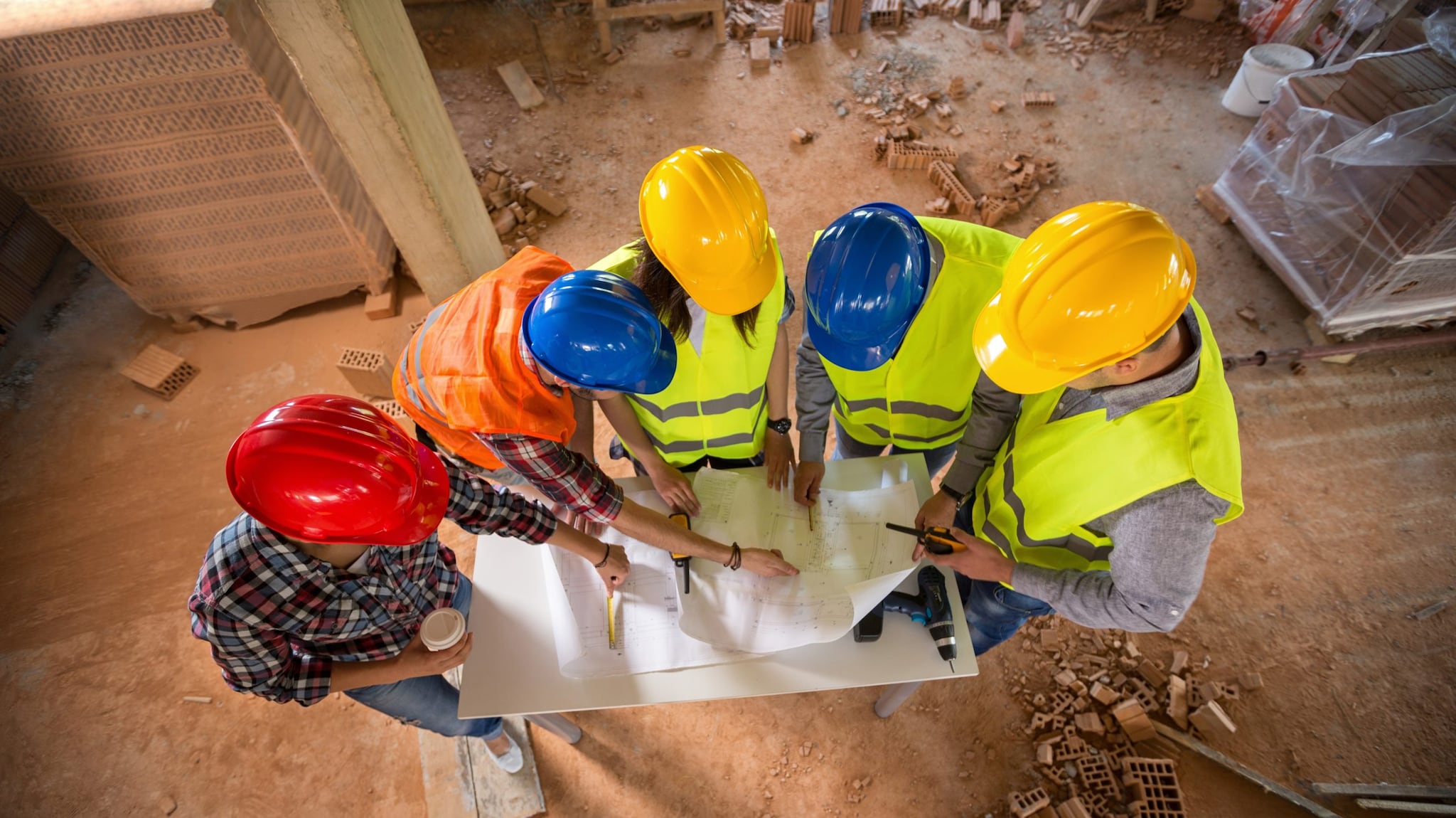Key points
- The construction industry employs millions of U.S. workers.
- Construction jobs are some of the most dangerous, with falls as the leading cause of death in the construction sector.
- It is important to know the risks so that employers and managers can prevent or reduce safety and health hazards.

Overview
The NIOSH Construction Program aims to protect construction workers by preventing work-related injury, illness, disability, and death. The program
- Gathers information,
- Conducts scientific research, and
- Translates the knowledge into products, solutions, and services.
Using our resources can help build a sustainable construction workforce.
Statistics
In 2019, 11.4 million U.S. workers were employed in construction. This represents a 25% increase since 2011.1
Compared to the general U.S. workforce, construction workers are more likely to be:
- Male (90.8% versus 53.2%)
- Hispanic (28.6% versus 16.4%)
- Foreign-born (24.7% versus 17.1%)2
Falls remain the leading cause of work-related deaths in construction. They account for more than 36.4% of all fatalities in this industry.1
Fatalities among Hispanic construction workers are particularly concerning. The number of fatal injuries rose about 90% from 2011 to 2019. This outpaced their employment growth in the industry during the same period.1
Small employers with fewer than 20 employees accounted for 75% of fatal falls between 2015 and 2017. However, they make up only 39% of construction payroll employment.3
Stay up-to-date with CPWR
Safety and health impacts
There are many safety and health concerns that impact construction workers and workplaces. The National Occupational Research Agenda for Construction describes relevant issues, gaps, and safety and health needs in the industry. It aims to prioritize work among the many competing safety and health challenges.
Mental health issues and increasing opioid use and suicide rates are among the challenges impacting construction workers. Opioid use and suicides have risen significantly in recent years. A variety of factors inside and outside of the workplace can negatively affect mental health, including:
- Seasonal work
- Time away from family
- Workplace injuries and chronic pain
- Lack of paid sick leave
- Demanding schedules
Opioids have commonly been prescribed to treat pain from work-related injuries. The construction industry has some of the highest injury rates in the United States. Opioid use can lead to substance use disorder and overdoses. Understanding the causes and risks of opioid misuse can prevent future overdoses and deaths in the construction industry.
Resource
Learn more through our 3-part video series on Opioids in the Construction Industry.
Part 1: The Evolution of a Crisis
Part 2: Impacting Lives
Part 3: Pathways to Recovery
People at increased risk
In construction, Hispanic and women workers are at increased risk. They make up approximately 33% and 11% of the construction industry, respectively. Hispanic immigrant workers are at even higher risk of injuries than their US-born counterparts.
Issues that contribute to these safety disparities include:
- Limited personal protective equipment that fits all sizes and sexes
- Lack of training material available in Spanish
- Fewer safety programs available in small construction businesses
Prevention
- Preventing Excavator Quick Coupler Attachment Struck-by Fatalities and Injuries
- Preventing Dump Truck-Related Injuries & Deaths
- Preventing Worker Deaths from Trench Cave-ins
- Preventing Heat-related Illness or Death of Outdoor Workers
- Respirator Selection Guide for the Construction Industry
Shifting the focus of prevention efforts to safety climate and safety culture is important in the industry. A strong safety climate and safety culture helps reduce the potential for injuries, illnesses, and fatalities. Further, asking for input from workers allows for deeper insight into on-the-job hazards. Consider using participatory approaches to improve worker safety and health.
National Campaign to Prevent Falls
National Stand-Down to Prevent Struck-by Incidents
Prevention through Design, or PtD, is the process of designing work to remove a hazard. It is the most reliable and effective way to protect workers. Learn more about using this concept in construction here: Prevention Through Design to Address Continuing Construction Workplace Deaths and Injuries.
The Health Hazard Evaluation Program helps employees, unions, and employers learn whether health hazards are present at their workplace. They then recommend ways to reduce hazards and prevent work-related illness. The evaluations are done at no cost to the employees, unions, or employers. You can request one or search by construction for past evaluations.
Resources
Fatality Assessment and Control Evaluation (FACE) Reports
Review construction related NIOSH FACE and State FACE reports for recommendations to prevent similar deaths in CDC Stacks.
View by Collection (NIOSH/FACE) or search for reports using keywords in the search bar.
Infographics
- Preventing Falls in Construction Settings
- Preventing Hearing Loss
- Trench Safety Infographic (jpeg, PDF)
- Opioids - Prevention Goes a Long Way - en español
- Times are Tough: Protect Construction Workers from Opioid Risks
- Suicide Prevention - en español
- Women in Construction - Proper Fit
Videos
- Safety Data Sheets – You have a right to know - en español
- Construcción: Protéjase en el Trabajo
- Webinar Summary: "Safe Human-Robot Interaction in Construction”
More resources
- Construction Toolbox Talks
- Respirator Selection Guide: Construction
- Pamphlet: Safety and Health at Work: Construction Workers - en español
- Poster: Safety and Health at Work: Construction Workers - en español
- National Construction Center
Construction overlaps with many NIOSH research areas. You can find them all listed on the NIOSH Workplace Safety and Health Topics page.
- https://www.cpwr.com/wp-content/uploads/DataBulletin-February-2021.pdf
- https://www.cpwr.com/research/data-center/the-construction-chart-book/chart-book-6th-edition-labor-force-characteristics-labor-force-structure-and-definitions/
- https://www.cpwr.com/wp-content/uploads/publications/Quarter2-QDR-2019.pdf
